After two years off, Assassin’s Creed returns today with the Nordic-inspired Assassin’s Creed Valhalla, for PC, PlayStation 4, PlayStation 5, Xbox One, Xbox Series X, and Xbox Series S. Keeping with series tradition, Valhalla is a biiiig game. A couple of us on staff have been getting our viking on for the past week. Here’s what we’ve learned. May it serve you well on your quest to Valhalla — and send your enemies screaming to Hel.
Extremely mild spoilers follow for the first few hours — or roughly 0.1 per cent — of Assassin’s Creed Valhalla.
Brush up on the lore.
Assassin’s Creeds are history games, but they’re also sci-fi games. As much as each entry is a self-contained romp through a distinct historical setting, you’ll also (in most cases) have to spend some time in a modern-day setting involving corporate espionage, ancient beings, and the apocalypse. It’s bananas. Series veterans could probably use a refresher. Newcomers absolutely could (well, if they want to keep up with Valhalla’s modern-day segments). We’ve got you covered:
Leave Norway ASAP.
If you’ve followed the pre-release buzz for this game at all, you know that things are set in 9th-century England. You might be surprised, then, to start up the game and find yourself in brisk, beautiful Norway. As far as game settings go, it’s stunning, but heed this advice: Get thee to England as soon as possible.
Norway is basically Valhalla’s version of the Hinterlands, from Dragon Age: Inquisition, or early Pandora, from Borderlands 3. Once you get clear of it, the game opens up wide. You’ll unlock the full breadth of systems, including a roster of trackable Templars to stab and a burgeoning settlement to slowly but surely build into a fully functional town. And, look: If you’re worried about leaving the snowy region behind, don’t be. Even though the ability to do so conveniently ignores some plot points, you can always return to Norway at the push of a button to mop up missed collectibles and stare at the aurora borealis.
You can climb (almost) everything.
Like Genshin Impact and that one Zelda game everyone says it shamelessly copied, you can climb anything in Assassin’s Creed Valhalla. Well, almost everything. There are a few exceptions (sheer sheets of ice, for one), but the overall rule of thumb is this: If you can see it, you can climb it. And unlike those aforementioned games, there’s no pesky, croissant-shaped stamina bar to fret over.
Climb the Highpoints first.
If this isn’t your first rodeo, skip this tip.
If it is, heed it to the letter. When you reach a new region of the map, your first order of business should be to climb all of the Highpoints, which are identified by an eagle-shaped symbol. This will defog a good chunk of the map, revealing the surrounding geography and some key points of interest. Among Assassin’s Creed veterans, knocking these out is an impulse by now.
Use your Odin’s Sight liberally.
By clicking in the right thumbstick, you can activate your Odin’s Sight — basically, Eagle Vision from some of the previous games. This will highlight various objects in the world: enemies as red, treasure as gold, mission objectives as blue, door keys as, well, door keys, and so on. There’s no drawback for activating it constantly, so do so whenever you feel lost (or just want to get a lay of the land). Who knows: You might even turn up something you’d have otherwise missed.
Plus, since many of the enemies wear armour that’s nearly identical to your allies’ digs, it can be helpful to deploy Odin’s Sight in the heat of combat. That way, you can easily make out who the enemies are.
Need some silver? Go fishing!
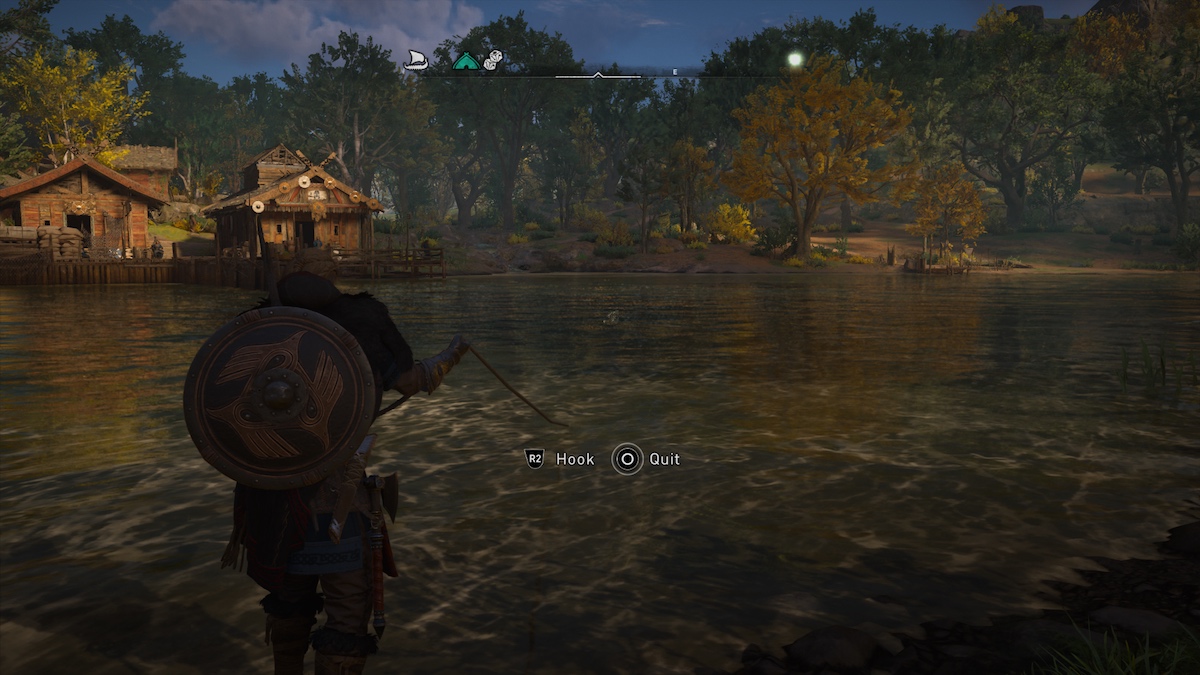
If you’re wanting some extra silver to buy more resources or supplies, a good way to earn some silver is to go fishing. Bigger fish pay out a dozen or more silver coins a pop, and you can hold a ton of them at once.
In shops, sell your trinkets in bulk.
Assassin’s Creed Valhalla continues the irritating video game tradition of giving you items that are functionally useless in every way other than the fact that you can sell them for silver. Seriously, why do video games keep doing this? Just show us the money! Thankfully, in Valhalla, these trinkets don’t take up any precious inventory space. It’s just a matter of remembering to sell them at a shop, which you can do by navigating to the sell menu (right bumper) and holding “Y” (on Xbox). Neglecting to means you’re just leaving silver on the table.
Invest in your horse.
Pretty early into Valhalla, you’ll start to encounter stables. Here you’ll find people who can sell you new horses and ravens. More importantly, they can sell you upgrades for your horse. These upgrades aren’t very expensive, especially if you make sure to fish and sell all your trinkets. The most important upgrade to grab right away is giving your horse the ability to swim. For folks who played a lot of Odyssey and Origins, this will be a huge moment. Finally, you can swim your horse across that small river instead of ditching your steed, swimming alone, and calling it when you reach the far shore!
Upgrade your rations first.
As you play, you’ll accrue a whole lot of leather and iron, two resources that are used to upgrade everything from your bow’s quiver to the armour on your back. At first, you should eschew all that and invest in your rations, which will heal you at the push of a button. Once you start needing to spend fabric — a third resource — on upgrades, you’ll have enough rations to keep your health afloat (at least on Vikingr difficulty). Then you can focus on all that other stuff.
Get a grip on how weapons work.
Every weapon or piece of armour in Assassin’s Creed Valhalla is unique. You won’t see it spawn from the corpses of dead enemies or from random lootable barrels. You also can’t break down or sell any of this stuff, which takes a minute to get used to. Rather, gear sticks with you for good. If you want better stronger weapons or tougher armour, you have to invest in what you have. Play around with various weapons and armour, see what suits your playstyle, and then dump your resources into it.
Choose an animal for your armour.
No, this has nothing to do with style. It’s all about substance. If you look at any piece of gear in Assassin’s Creed Valhalla, you’ll see one of three animal insignias: a raven, a wolf, or a bear. Your best bet is to pick one and stick with it. As you level up, you’ll earn small, animal-aligned bonuses that automatically apply to any gear with that animal’s insignia. These bonuses are small — a marginal bonus to your critical chance here, a small boost to evasion there — but they add up over time. So if you pour all of your points into the raven segment of your skill web (more on that in a bit), you’ll eventually supercharge all of your gear with a raven insignia.
Equip your armour by set.
Armour in Valhalla is organised by sets, each of which have two unlockable perks, which can do everything from granting you everything from an increased critical chance to a boost in speed when you’re in a tight spot. If you equip two pieces of armour from a given set, you’ll unlock that set’s first perk. Equip all five, and you’ll get the second perk. (Note: The perks only apply while armour is on. Swap it for something else, and you’ll lose them.)
You can “hide” armour.
Sometimes, you find a piece of gear that’s just too good not to equip. Sometimes, it’s hideous. In those instances, just hover over a certain piece of gear and hold down the right thumbstick. That’ll hide it from sight (but not from mind, as you’ll still reap its sweet, sweet stat benefits).
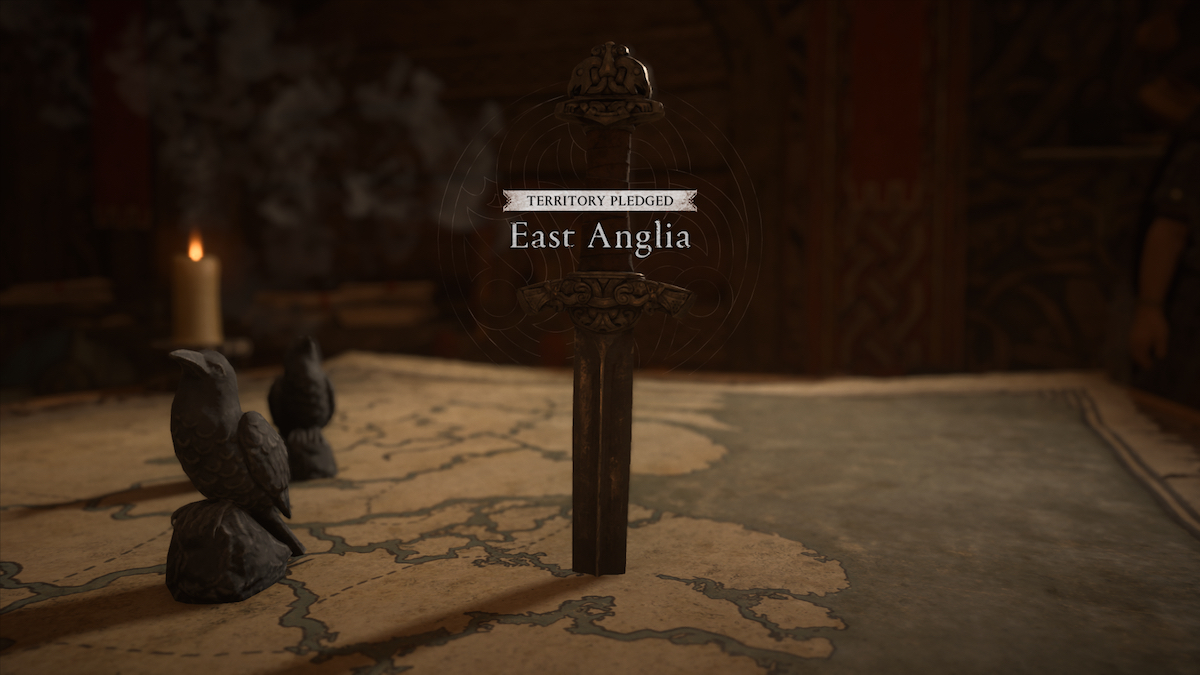
You can only pledge one territory at once.
Assassin’s Creed Valhalla had questlines that are tied to various territories. Once you reach England, you’ll be prompted with a series of regions to “pledge” to. This will kick off a multi-chapter questline for that region. You can still go wherever you want, but you can only complete mainline missions for that region. And if you’re pledged to one territory (say, Ledecestrescire) but try to pledge another (say, Grantebridgescire), you’ll be gated off from the Ledecestrescire questline (until you pledge again). Your best bet is to go territories one at a time, seeing each to the end before pledging to another.
Pledge to Grantebridgescire first.
When you’re first introduced to the pledging system, just two are within your power level: Grantebridgescire and Ledecestrescire. Do the Grantebridgescire questline first. It’s not quite as drawn out as the Ledecestrescire one, and going through it will give you a grasp on the way questlines work in this game all the quicker. Bonus: You get to meet the most badass character in the game sooner rather than later. (Sorry, no spoilers on this one!)
Don’t fall victim to the open-world slog.
Valhalla’s world is big, yes, but it’s also alive. Pull up the map, and you’ll see gold, white, and blue orbs all over the place. The gold orbs signify treasure: ingots (used for improving your gear), abilities (high-powered combat skills), and gear (exactly what it sounds like). White orbs also mark collectibles, but they’re not as immediately useful as the gold treasures. Both gold and white treasures usually require solving some sort of rudimentary environmental puzzle.
The blue orbs are more interesting. Many of them are so-called “world events,” brief one-acts that grant you some experience points — or what any other game would call a side-quest. And the vignettes are often fantastic. (One, in Grantebridgescire, has you unleash a battalion of cats on a pesky field of rodents.) Some are fascinating mini-games, including, but not limited to, a physics-based, stone-stacking game that’s oddly challenging; a series of platforming tests that rival the leaping and jumping of Assassin’s Creed: Revelations; and some Ubisoft-requisite hallucination challenges that, to use a technical term, make Eivor trip balls.
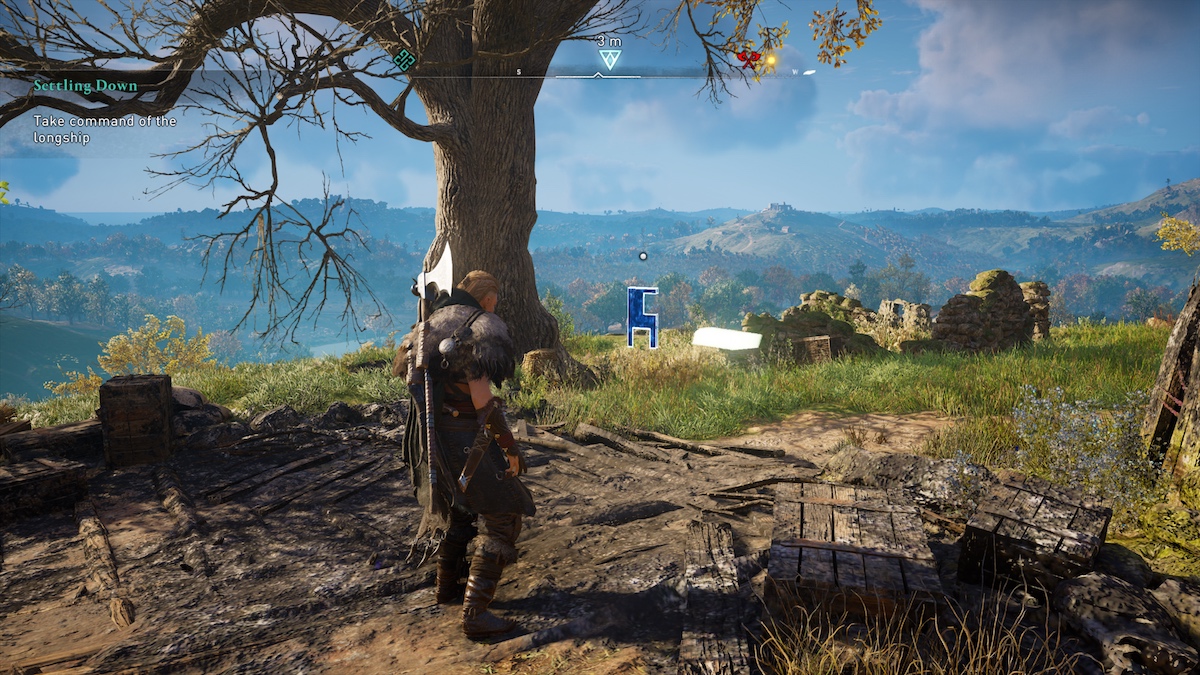
No matter where you are, there’s no shortage of unique things to do, so this may sound counterintuitive: Don’t focus too much time going out of your way to hit everything. The questlines you pledge will have you traipsing all over the territory. As you progress through the chapters of each territory, hit the ancillary stuff that you come within a stone’s throw of. You’ll reap plenty of rewards — including the best reward, that of experiencing this gloriously realised open world — along the way.
Don’t try to hunt down the Order until you’re at least power-level 90.
Just trust us.
Don’t try to fight a Daughter of Lerion until you’re at least power-level one bazillion.
Again, trust us on this one.
Prioritise finding Books of Knowledge.
You can chop up most foes with a good axe or sword, but it’s always smart to have more combat options, so be on the lookout for golden book icons on your map or in-game compass. Collecting these will unlock new combat abilities, some of which are very useful, like one that lets you shoot a dozen arrows at a bunch of targets. And once you have some good abilities, keep looking for books, because you can sometimes find an upgrade for abilities you already have, making them even better and more powerful.
Treasure maps can show you what to hunt for.
After you build a shack for Ravensthorpe’s cartographer, you’ll be able to purchase treasure maps. Forking over silver for each one will pinpoint exactly where certain treasures are, by transforming one of the gold orbs on your map into an easily identifiable icon. So if you buy, say, a treasure map for a Book of Knowledge in Oxenefordscire, one of the gold orbs on your map in Oxenefordscire will turn into a Book of Knowledge icon. The idea here is to use these maps to narrow down which orbs are worth tracking down (and filtering out which aren’t).
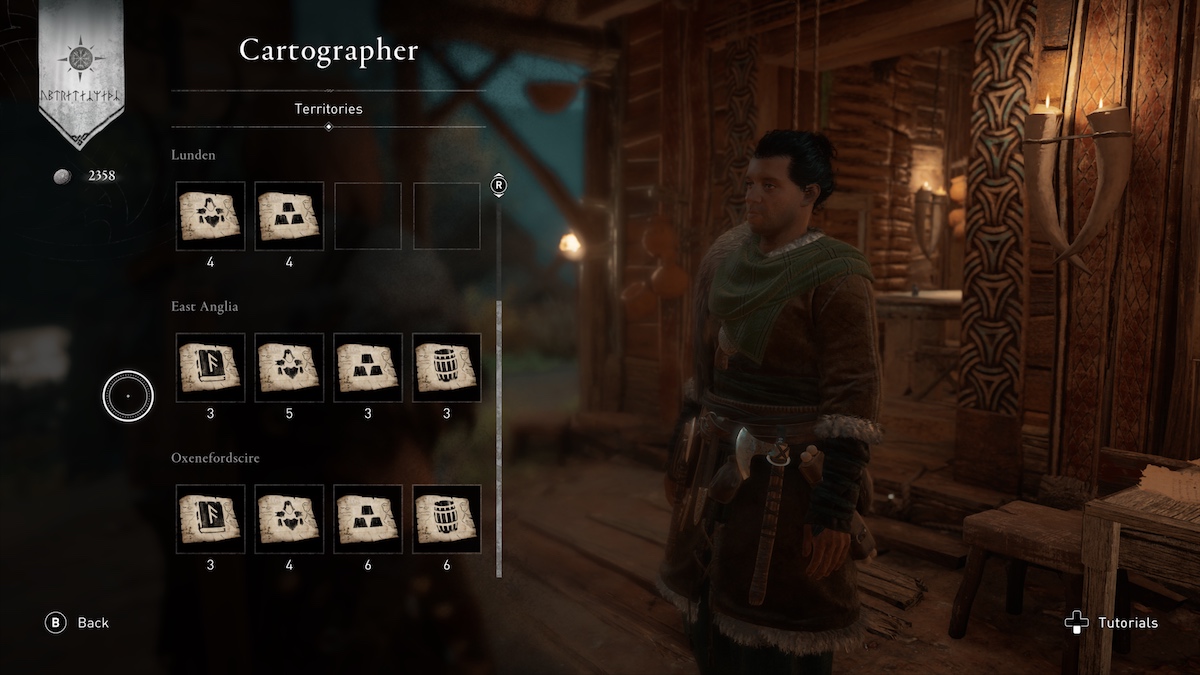
The unofficial — and penny-pinching — method here, of course, is to look at the cartographer’s wares and use that as a metric. Let’s say the cartographer has three ability tome icons for sale in Oxenefordscire. You could buy all three of them for 150 silver, at 50 a pop. Or you could just use that knowledge to know that three Books of Knowledge are still at large in the region, head over, and do some spelunking the good old-fashioned way.
Flyt everyone.
Flyting is, to take it from Atlas Obscura, the ancient art of “verbal jousting.” It’s a huge part of Valhalla. As you explore the world, you’ll come across various people who want to flyt you. (They’re represented by a masquerade-like mask symbol.) These mini-games may seem silly, but they offer very serious benefits. For one, emerging victorious will earn you silver; the more you bet, the more you’ll earn. For another, you’ll also get a boost to your charisma stat. Get your charisma high enough, and you might even unlock dialogue options that allow you to skip arduous tasks by, um, “encouraging” people to see your way, Fallout-style.
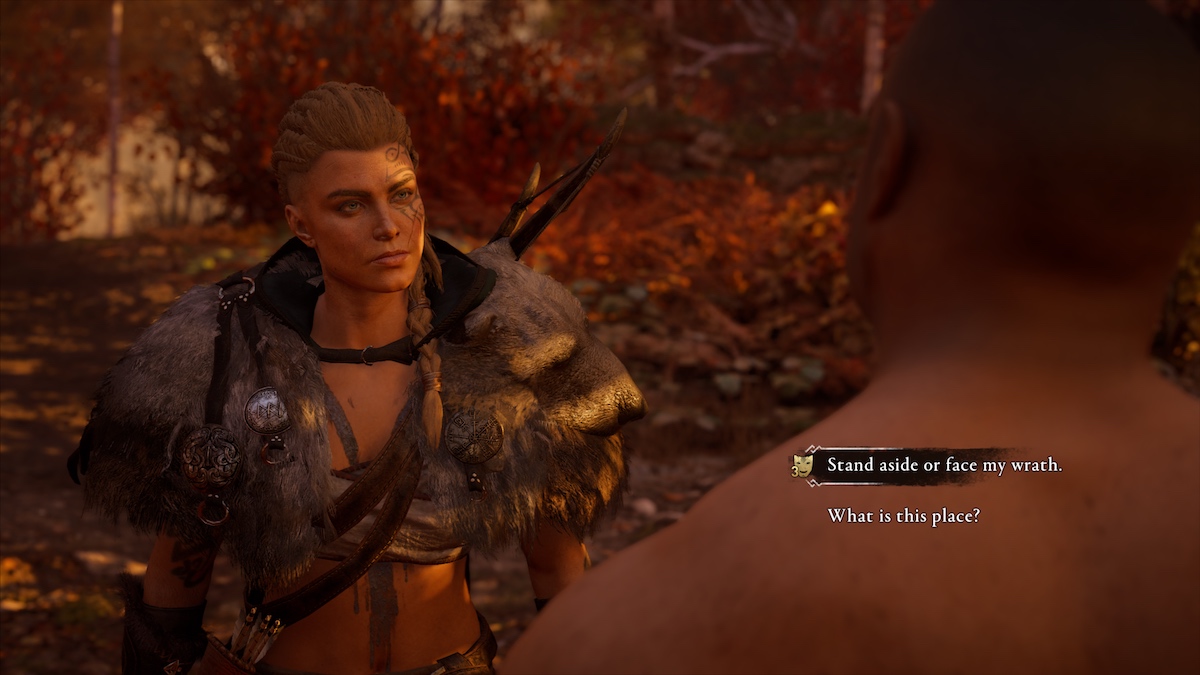
Bonus tip: With each round of flyting, you can immediately write off one of the choices. Your goal is to choose the phrase that both matches the cadence to the prior phrase and ends in a perfect rhyme. Only two of three options will have that perfect rhyme. Forget the one that doesn’t.
You can skip dialogue.
Press “B” (on Xbox). It skips by the sentence, not the conversation. Just don’t do this in a flyt-off, or you’ll miss the rhythm!
Focus on revealing all of your skills.
The skill tree in Valhalla is more like a skill spiderweb, with tons of branching and interconnecting skills and abilities hidden within. Thing is, you can’t see most of it at the start. As you earn skill points, try to unlock skills that have connections that go off into the fog beyond. These will unlock new skills to… unlock. The big advantage here is that you can plan ahead and get useful skills sooner. Don’t worry about getting a skill you don’t like just to open up a new section either, because you can just respec later.
You can respec without repercussion.
Assassin’s Creed Valhalla doesn’t have any respec tokens or require a small fortune of in-game currency to reallocate your character. You can reset all of your skills, at any time, by opening up your skill web and pressing Y (on Xbox). But if you don’t want to go through the trouble of reallocating most of your skills more or less exactly where they were, you can reset skills piecemeal. Just hover over the one you want to refund and hold X.
Don’t get the Explosive Corpse skill.
As you fill out your skill tree, you might see some random skills and think, “Sure, I’ll get that, why not?” And that’s not a bad strategy in Valhalla, as most skills are useful — or at least not intrusive. But there is an exception: Don’t get Explosive Corpse, a skill that allows you to set traps on bodies. In theory, it sounds useful, but in practice it sucks and that’s because of the controls. Setting a trap is easy: Just hold the right thumbstick for a bit near a body. This is also the same way to activate your Odin’s Sight. This becomes annoying when you are surrounded by corpses, which happens a lot in this game, as you’ll go to scan the environment, and then end up kneeling next to a corpse for precious whole seconds.
Locked buildings mostly repeat the same environmental puzzles.
Let’s say a quest objective or a treasure is locked behind a door or is stuck inside some building with a barred door. How do you get it? Well, for the most part, buildings that are locked up tight have a few ways to get in that the game uses over and over. Here are the most common — and what you should be looking for if you get stuck.
Locked doors: Find the key. Use your Odin’s Sight to pinpoint it. It’s almost always nearby — sometimes on a guard or in a room somewhere.
Barred doors: Look around and see if there’s any window or opening that might be too small to climb through, but might be perfect for shooting an arrow through to break whatever is holding the door shut.
Hidden openings: Break any boxes or crates that are near the area you are trying to enter, as often small openings that you can slide through will be hidden behind these. If not, boxes often contain silver so it’s a no-lose situation.
Thin and breakable walls: If you see a wall that looks like it’s made out of twigs, it’s probably breakable. You can always check by aiming your bow at a wall or door to see. If your reticle turns red, you can break it! (Also, if you see a wooden panel on the floor, shoot it and you can break it open and go underground and collect that annoying treasure you can’t seem to get to.)
You can pet the dogs.
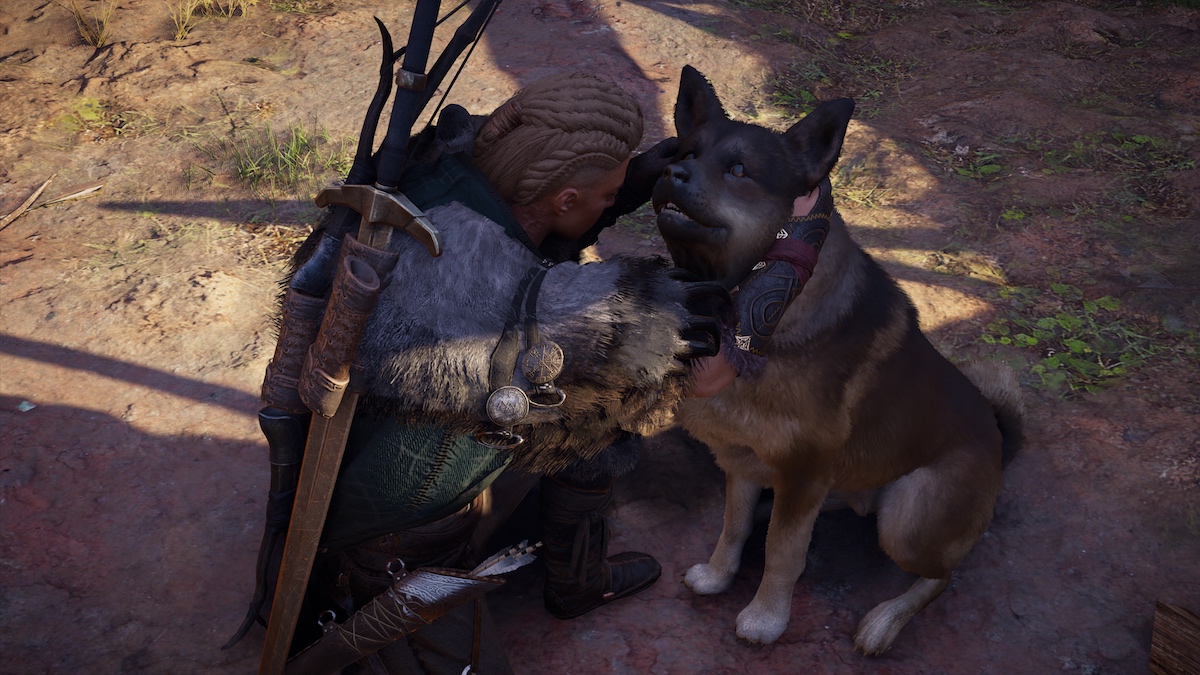
Best Assassin’s Creed ever.
And hug the cats.
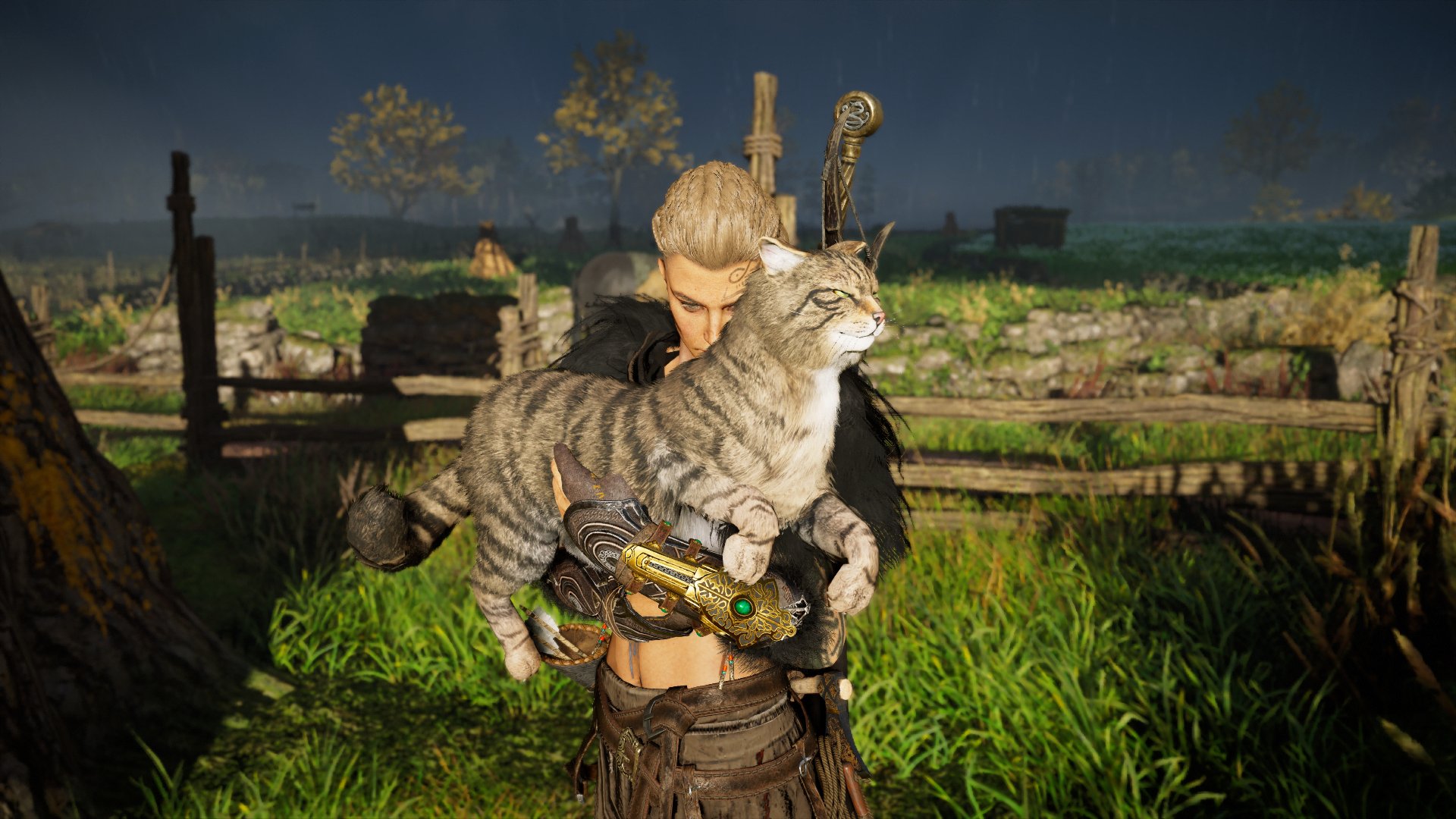
Best game ever.
This article was originally published in November 2020.
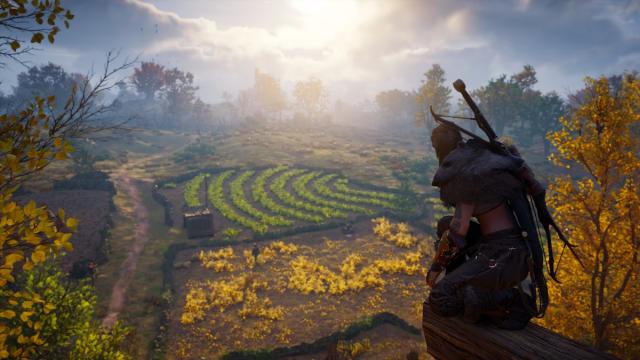
Leave a Reply